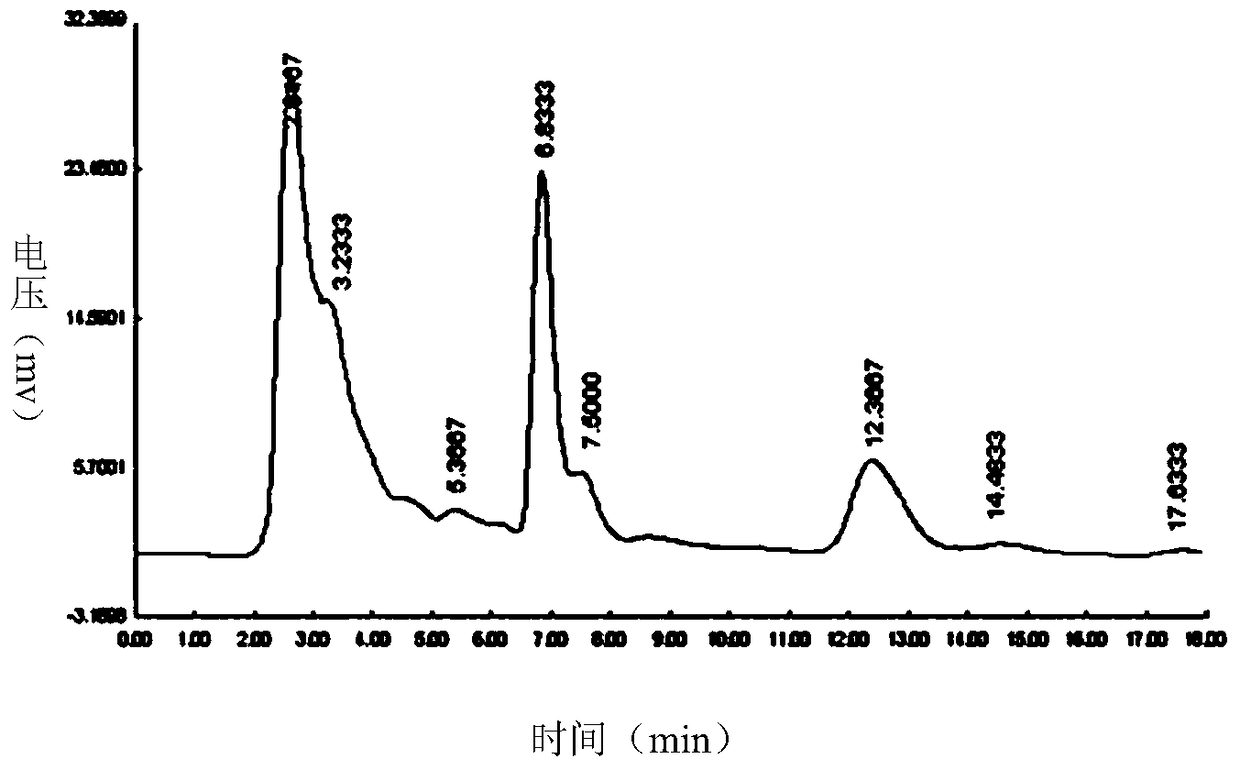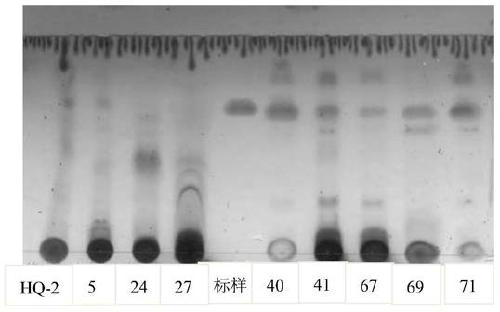A method for culturing and screening paclitaxel-producing bacteria from Taxus chinensis
A technology of paclitaxel and strains, applied in the biological field, can solve the problems of limited drug sources, low yield, low paclitaxel content, etc., and achieve the effect of practical and simple operation
- Summary
- Abstract
- Description
- Claims
- Application Information
AI Technical Summary
Problems solved by technology
Method used
Image
Examples
Embodiment
[0027] Cut the fresh yew fruit from Huangshan area into 1cm 2 small pieces. Soak the fruit in 75% alcohol for about 5 minutes, and inoculate it on the following plate medium: Potato 20gL -1 , glucose 20gL -1 , agar 20gL -1 and glucose 40gL -1 , peptone 10gL -1 , yeast extract powder 10gL -1 , agar 20gL -1 , and cultured in a 25°C incubator for 8 days. After the colony grows from the incision, observe the hyphae (colonies) growing from the incision of the material in the petri dish, pick the tip of the mycelium at the incision and transfer it to a new plate medium for culture, and after the colony grows, according to the colony According to the difference in shape, color and growth time, the hyphae on the edge were picked for isolation and culture, the shape of the colony and the neatness of the edge of the colony were observed, and corresponding records were made. After repeated purification by mycelium top purification method, they were transferred to PDA slant medium...
PUM
 Login to View More
Login to View More Abstract
Description
Claims
Application Information
 Login to View More
Login to View More - R&D
- Intellectual Property
- Life Sciences
- Materials
- Tech Scout
- Unparalleled Data Quality
- Higher Quality Content
- 60% Fewer Hallucinations
Browse by: Latest US Patents, China's latest patents, Technical Efficacy Thesaurus, Application Domain, Technology Topic, Popular Technical Reports.
© 2025 PatSnap. All rights reserved.Legal|Privacy policy|Modern Slavery Act Transparency Statement|Sitemap|About US| Contact US: help@patsnap.com



